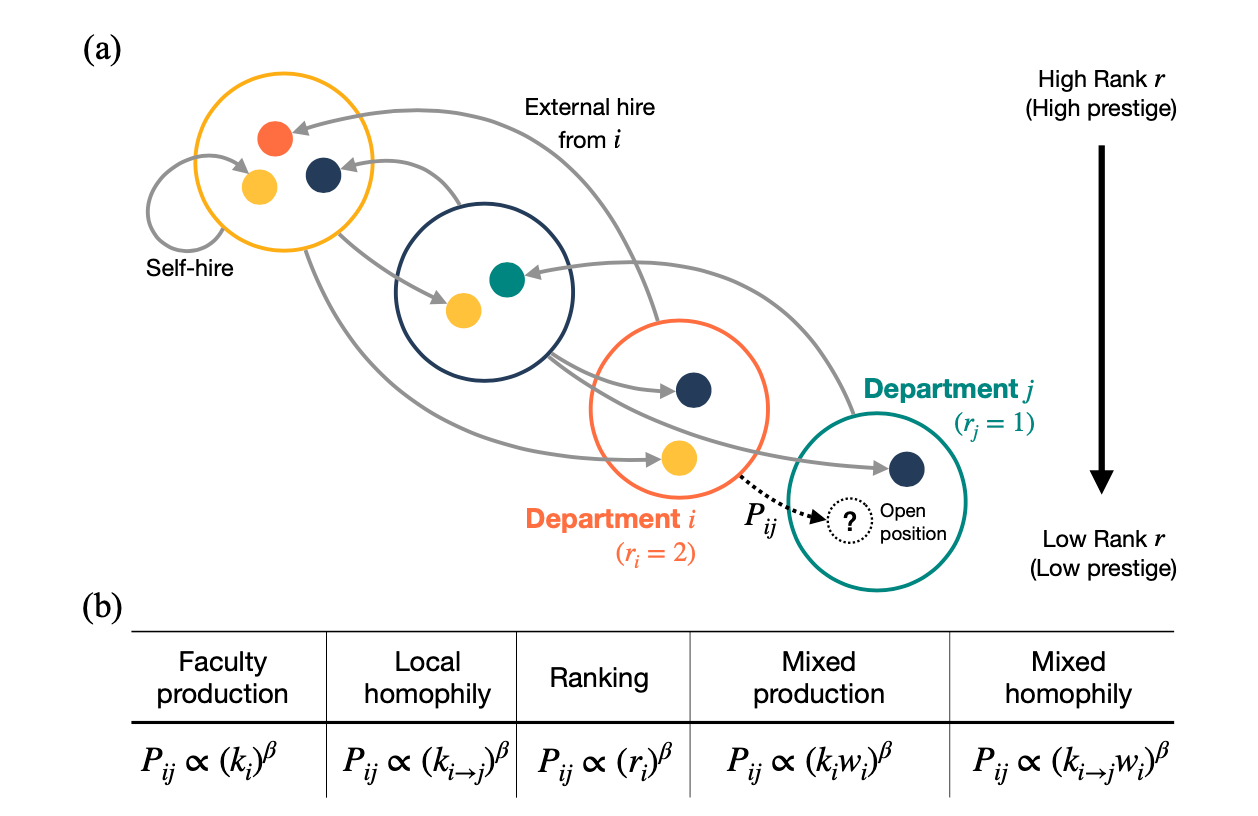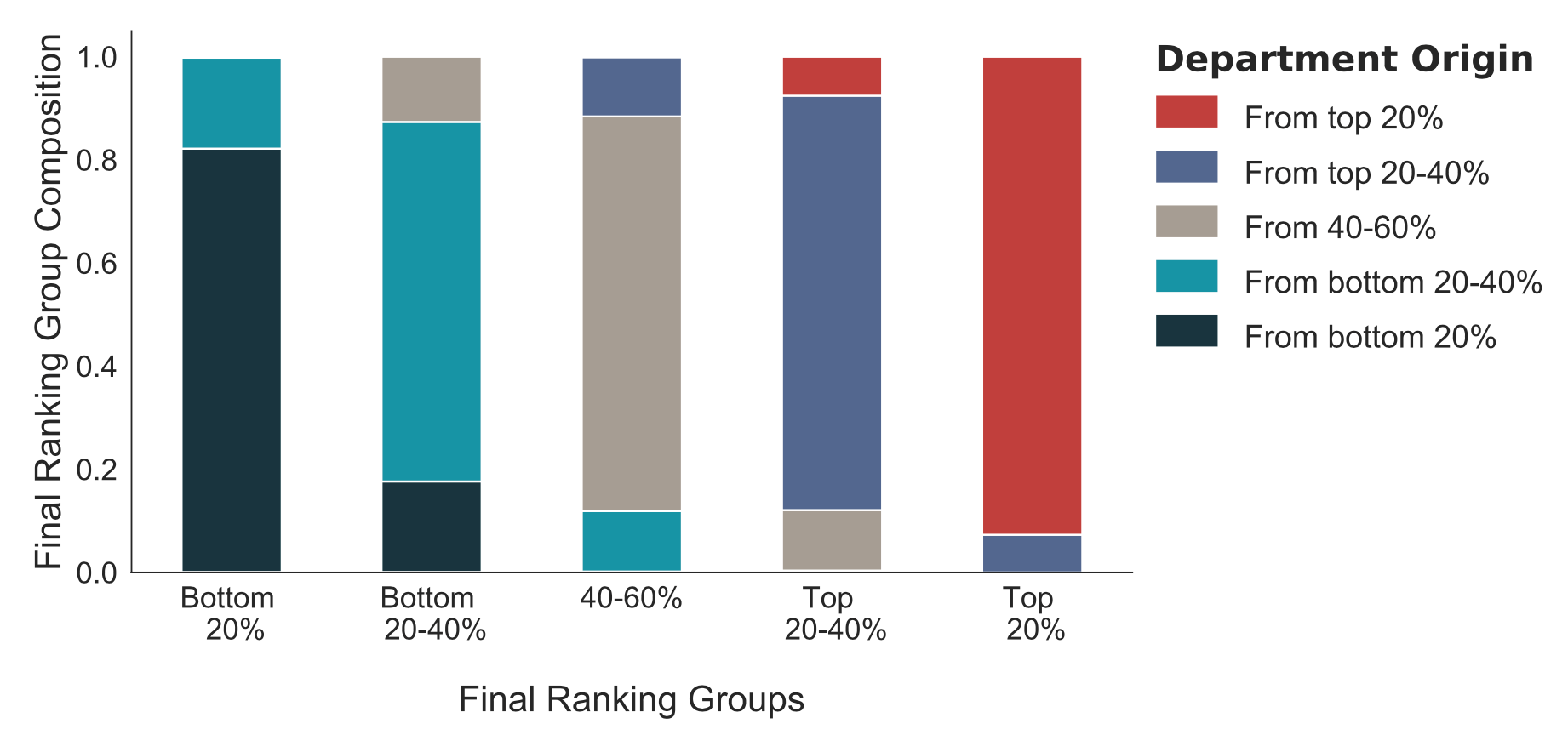
Faculty hiring networks—the complex flows between departments of PhD students into faculty jobs as shown in Fig. 1—are steeply hierarchical, with about 85% of faculty train at more elite institutions than where they work.
This prestige hierarchy shapes social and epistemic inequalities, faculty careers, the spread of ideas, and field demographics. What can be the main drivers leading to this structural inequality of the hiring networks?
To understand the mechanisms, we studied five models of faculty hiring which capture different ways prestige can reinforce itself, either locally or globally, to create a hiring hierarchy.
The models are adaptive networks whose nodes, denoting institutions, hire new faculty and choose which other node to hire from, based on prestige.
Here, prestige is defined in five ways depending on the hiring models, and the main two are (i) Global faculty production model: the hiring preference is proportional to the number of faculty production of an institution, and (ii) Local homophily model: the hiring preference is proportional to the number of pre-existing faculty members’ alma maters.

After comparing the steepness and inequality of simulated networks’ hierarchies from these models with our 2015 Computer Science, Business, and History faculty hiring networks, we find that only two of the models, Global faculty production and Local homophily model, produce realistic hierarchies.
Then, we further tested these models in two ways.
First, we compared the simulated and empirical hiring networks on a variety of network structural measures. Here, the model where prestige derives from global faculty production creates more realistic hiring networks.
Second, we compared the “biased visibility” of elite departments for simulated and empirical networks. This measure quantifies how an individual institution forms an inaccurate perception about the composition of their field’s academic workforce because the way an institution “sees” depends on its location in a network and the distribution of its neighbors’ attributes (here, faculty’s alma mater).
In this test, the model where prestige is derived from local faculty production, the Local homophily model, creates more realistic hiring networks. This suggests both mechanisms may shape actual faculty hiring networks.
Finally, we examined faculty hiring networks based on these plausible hiring models to answer the question: How stable is a prestige hierarchy in the long run?
If hiring follows either of our prestige mechanisms, we find about 90% of “top” institutions preserve their prestigious positions even after one academic faculty generation is all replaced. In the same way, about 80% of institutions stay in the bottom quintile of institutional ranks as shown in Fig. 2.

These findings tell us that once an institution is positioned near the top or bottom of the network hierarchy, prestige mobility by chance is constrained. This also demonstrates that institution ranks are relatively stable over time without a strategic hiring or placement behavior by individual institutions.
This further means if institutions’ hiring practices keep following these types of preferences toward institutional prestige, the hiring system would mix poorly by rank.
We want to mention that we used very simple models. These models omit any role of individual faculty characteristics, environments, and applicants’ preferences.
And yet, they recapitulate real hiring network structure, suggesting a simple “prestige” feedback loop from faculty placement rates can drive very stable prestige hierarchies.
To sum up, we find the self-reinforcing dynamics of prestige-based faculty hiring easily leads to entrenched hierarchies, and understanding these dynamics is crucial for diversity efforts and innovation in science.
Comments